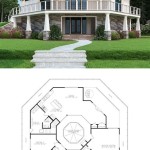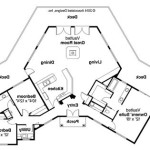Sketching a house plan is the process of creating a rough layout and design of a house, typically on paper, before developing detailed blueprints. It involves drawing the basic shape and dimensions of the house, as well as the placement of rooms, windows, doors, and other features.
Sketching a house plan is an essential step in the home design process, as it allows homeowners and architects to visualize the layout and make necessary adjustments before finalizing the design. This can help avoid costly changes or errors later on in the construction process.
In the following sections, we will provide a step-by-step guide on how to sketch a house plan, including tips and techniques for creating an effective and informative sketch.
Here are 10 important points to consider when sketching a house plan:
- Determine the scale.
- Draw the exterior walls.
- Add interior walls.
- Draw doors and windows.
- Add furniture and fixtures.
- Label rooms and spaces.
- Include dimensions.
- Add notes and symbols.
- Use different line weights.
- Keep it neat and organized.
Following these steps will help you create a clear and informative house plan sketch that can be used to communicate your design ideas effectively.
Determine the scale.
The scale of your house plan sketch is important because it determines the level of detail you can include. A larger scale will allow you to show more detail, while a smaller scale will give you a more general overview of the house.
- 1/4 inch = 1 foot: This is a common scale for house plan sketches, as it allows you to show a good amount of detail without making the sketch too large.
- 1/8 inch = 1 foot: This is a smaller scale that is useful for showing a larger area on a single sheet of paper. However, it will not allow you to show as much detail.
- 1/2 inch = 1 foot: This is a larger scale that is useful for showing very detailed plans. However, it can be difficult to fit a large house on a single sheet of paper at this scale.
- 1 inch = 1 foot: This is the largest scale that is typically used for house plan sketches. It allows you to show the most detail, but it can be difficult to fit even a small house on a single sheet of paper at this scale.
Once you have determined the scale of your sketch, you can begin drawing the exterior walls of the house.
Draw the exterior walls.
The exterior walls of the house are the foundation of your house plan sketch. They define the shape and size of the house, and they also provide support for the roof and other structural elements.
To draw the exterior walls, start by drawing a rectangle or square to represent the overall shape of the house. Then, add any additional walls or extensions to the rectangle or square. Be sure to include all of the exterior doors and windows in your sketch.
Once you have drawn the basic shape of the house, you can begin to add details to the exterior walls. This may include adding siding, brick, or other exterior finishes. You can also add any decorative elements, such as trim, molding, or shutters.
When drawing the exterior walls, be sure to pay attention to the scale of your sketch. The walls should be thick enough to support the roof and other structural elements, but they should not be so thick that they look out of proportion.
Add interior walls.
Once you have drawn the exterior walls of the house, you can begin to add the interior walls. The interior walls divide the house into different rooms and spaces, and they also provide support for the roof and other structural elements.
To draw the interior walls, start by drawing a line from one exterior wall to another. Then, add any additional walls or partitions to divide the space into different rooms. Be sure to include all of the interior doors and windows in your sketch.
When drawing the interior walls, be sure to pay attention to the scale of your sketch. The walls should be thick enough to support the roof and other structural elements, but they should not be so thick that they look out of proportion.
You can also add any decorative elements to the interior walls, such as molding, trim, or wainscoting. However, be sure not to overdo it, as too much detail can make your sketch look cluttered and confusing.
Once you have finished adding the interior walls, you can begin to add furniture and fixtures to your house plan sketch.
Draw doors and windows.
Doors and windows are an important part of any house plan sketch. They allow people to enter and exit the house, and they also provide natural light and ventilation.
- Draw the door frame first.
The door frame is the rectangular opening in the wall that the door will fit into. To draw the door frame, first draw two vertical lines to represent the sides of the frame. Then, draw a horizontal line at the top of the frame and another horizontal line at the bottom of the frame.
- Draw the door.
The door is the movable panel that fits inside the door frame. To draw the door, first draw a rectangle that is slightly smaller than the door frame. Then, draw a vertical line down the center of the rectangle to represent the door handle.
- Add details to the door and door frame.
Once you have drawn the basic shape of the door and door frame, you can begin to add details. This may include adding hinges, doorknobs, or other hardware. You can also add any decorative elements, such as molding or trim.
- Draw the windows.
Windows are similar to doors, but they are typically larger and do not have a movable panel. To draw a window, first draw a rectangle to represent the overall shape of the window. Then, add any additional details, such as window panes, muntins, or trim.
Be sure to pay attention to the scale of your sketch when drawing doors and windows. The doors and windows should be large enough to allow people to enter and exit the house and to provide adequate natural light and ventilation, but they should not be so large that they look out of proportion.
Add furniture and fixtures.
Furniture and fixtures are the items that make a house a home. They provide comfort, functionality, and style. When sketching a house plan, it is important to include furniture and fixtures to give the reader a better sense of the space and how it can be used.
- Sofas and chairs:
Sofas and chairs are the anchor pieces of any living room. They provide a place to sit, relax, and entertain guests. When sketching sofas and chairs, be sure to include the overall shape, size, and any details, such as cushions or upholstery.
- Tables:
Tables are another essential piece of furniture for any home. They can be used for dining, working, or simply displaying dcor. When sketching tables, be sure to include the overall shape, size, and any details, such as legs or a tabletop.
- Beds:
Beds are the centerpiece of any bedroom. They provide a place to sleep and relax. When sketching beds, be sure to include the overall shape, size, and any details, such as a headboard or footboard.
- Cabinets and shelves:
Cabinets and shelves are a great way to add storage and organization to any room. They can be used to store clothes, books, dishes, or other items. When sketching cabinets and shelves, be sure to include the overall shape, size, and any details, such as doors or drawers.
By including furniture and fixtures in your house plan sketch, you can give the reader a better sense of the space and how it can be used. This can be helpful for both planning purposes and for marketing purposes.
Label rooms and spaces.
Labeling the rooms and spaces in your house plan sketch is an important step, as it helps to identify the different areas of the house and their intended use. This can be helpful for both planning purposes and for marketing purposes.
- Use clear and concise labels.
The labels for your rooms and spaces should be clear and concise, so that there is no confusion about what each space is used for. For example, you could label a room as “Living Room,” “Kitchen,” or “Bedroom.”
- Be consistent with your labeling.
Once you have chosen a labeling system, be consistent with it throughout your house plan sketch. This will help to make your sketch more readable and easier to understand.
- Use different fonts or colors to differentiate between spaces.
If you want to make it even easier to differentiate between different spaces in your house plan sketch, you can use different fonts or colors for the labels. For example, you could use a bold font for the main rooms in the house and a lighter font for the secondary spaces.
- Add notes to provide additional information.
If there are any additional details that you want to provide about a particular room or space, you can add notes to your sketch. For example, you could note the dimensions of the room, the type of flooring, or the intended use of the space.
By labeling the rooms and spaces in your house plan sketch, you can make it easier for others to understand your design and vision for the home.
Include dimensions.
Including dimensions in your house plan sketch is an important step, as it provides valuable information about the size and scale of the house. This information can be helpful for both planning purposes and for marketing purposes.
- Dimensions help to ensure that the house is built to the correct size.
When you include dimensions in your house plan sketch, you are providing the builder with the information they need to build the house to the correct size. This can help to avoid costly mistakes and delays during the construction process.
- Dimensions help to plan the layout of the house.
Dimensions can also be helpful for planning the layout of the house. By knowing the dimensions of the different rooms and spaces, you can make sure that the furniture and fixtures will fit properly. This can help to create a more functional and comfortable home.
- Dimensions help to market the house.
Dimensions can also be helpful for marketing the house. By including dimensions in your house plan sketch, you are providing potential buyers with the information they need to make an informed decision about the house. This can help to increase the chances of selling the house quickly and for a good price.
- Use clear and concise dimensions.
When including dimensions in your house plan sketch, be sure to use clear and concise language. The dimensions should be easy to read and understand. Avoid using abbreviations or jargon that may be confusing to others.
By including dimensions in your house plan sketch, you can provide valuable information about the size and scale of the house. This information can be helpful for both planning purposes and for marketing purposes.
Add notes and symbols.
Adding notes and symbols to your house plan sketch can help to provide additional information and clarity. Notes can be used to explain specific details about the design, such as the type of materials to be used or the intended use of a particular space. Symbols can be used to represent common features and objects, such as windows, doors, and appliances.
- Use notes to explain specific details about the design.
Notes can be used to explain specific details about the design that cannot be easily shown in the sketch itself. For example, you could use a note to specify the type of materials to be used for the flooring or the countertops. You could also use a note to explain the intended use of a particular space, such as a home office or a guest room.
- Use symbols to represent common features and objects.
Symbols can be used to represent common features and objects in your house plan sketch. This can help to save time and space, and it can also make your sketch easier to read and understand. For example, you could use a symbol to represent a window, a door, or an appliance. You can find a variety of symbols online or in books on architectural drafting.
- Use notes and symbols consistently throughout your sketch.
Once you have chosen a system for using notes and symbols, be consistent with it throughout your house plan sketch. This will help to make your sketch more readable and easier to understand. For example, if you use a particular symbol to represent a window in one part of your sketch, be sure to use the same symbol to represent windows in all other parts of your sketch.
- Use clear and concise language.
When adding notes and symbols to your house plan sketch, be sure to use clear and concise language. The notes and symbols should be easy to read and understand. Avoid using abbreviations or jargon that may be confusing to others.
By adding notes and symbols to your house plan sketch, you can provide additional information and clarity that can help others to understand your design.
Use different line weights.
Using different line weights can help to add depth and dimension to your house plan sketch. Thicker lines can be used to emphasize important elements of the design, such as the exterior walls or the main rooms of the house. Thinner lines can be used for less important elements, such as interior walls or furniture.
- Use thicker lines for the exterior walls.
The exterior walls of the house are the most important structural elements, so they should be drawn with a thicker line weight. This will help to emphasize the importance of the walls and to make them stand out from the rest of the sketch.
- Use thinner lines for the interior walls.
The interior walls of the house are less important than the exterior walls, so they can be drawn with a thinner line weight. This will help to create a sense of depth and dimension in the sketch.
- Use thicker lines for the main rooms of the house.
The main rooms of the house, such as the living room, dining room, and kitchen, should be drawn with a thicker line weight than the secondary rooms, such as the bedrooms and bathrooms. This will help to emphasize the importance of the main rooms and to make them stand out from the rest of the sketch.
- Use thinner lines for the secondary rooms of the house.
The secondary rooms of the house, such as the bedrooms and bathrooms, can be drawn with a thinner line weight than the main rooms. This will help to create a sense of hierarchy in the sketch and to make the main rooms stand out.
By using different line weights, you can add depth and dimension to your house plan sketch and emphasize the important elements of the design.
Keep it neat and organized.
Keeping your house plan sketch neat and organized is important for several reasons. First, it makes it easier to read and understand the sketch. A cluttered and disorganized sketch can be difficult to follow, and it may be difficult to visualize the design of the house. Second, a neat and organized sketch is more professional and polished. It shows that you have taken the time to carefully plan your design, and it makes a good impression on potential buyers or builders.
- Use a ruler or straightedge to draw straight lines.
Straight lines are essential for a neat and organized house plan sketch. Use a ruler or straightedge to draw all of the lines in your sketch, including the exterior walls, interior walls, doors, and windows. This will help to give your sketch a clean and professional look.
- Use different line weights to emphasize important elements.
As discussed in the previous section, using different line weights can help to add depth and dimension to your sketch and emphasize the important elements of the design. Use thicker lines for the exterior walls, the main rooms of the house, and other important elements. Use thinner lines for the interior walls, the secondary rooms of the house, and other less important elements.
- Use a consistent scale throughout your sketch.
Using a consistent scale throughout your sketch is important for creating a sense of accuracy and realism. Choose a scale that is appropriate for the size of your house and the level of detail that you want to show in your sketch. Once you have chosen a scale, be sure to stick to it throughout your sketch.
- Label all of the rooms and spaces in your sketch.
Labeling the rooms and spaces in your sketch is an important step, as it helps to identify the different areas of the house and their intended use. This can be helpful for both planning purposes and for marketing purposes. Use clear and concise labels, and be consistent with your labeling throughout your sketch.
By following these tips, you can keep your house plan sketch neat and organized. This will make it easier to read and understand, and it will give your sketch a more professional and polished look.









Related Posts








